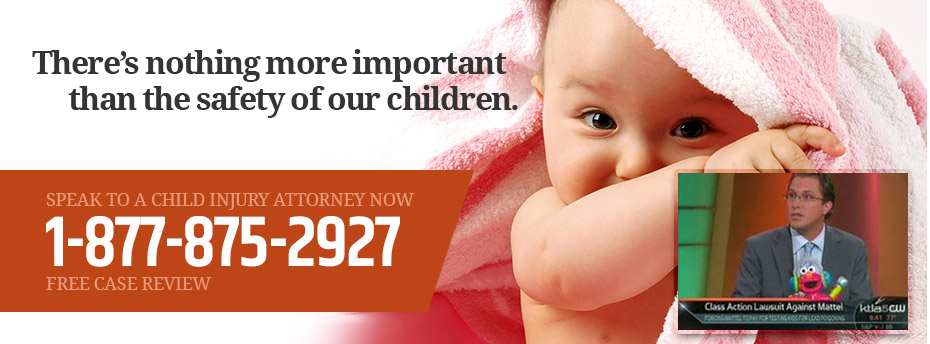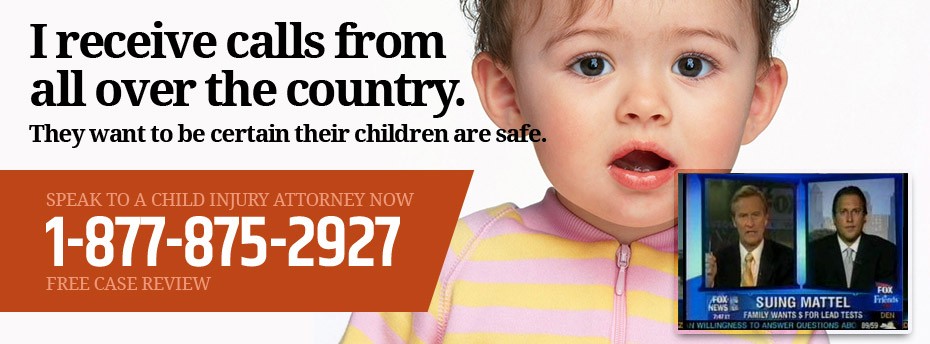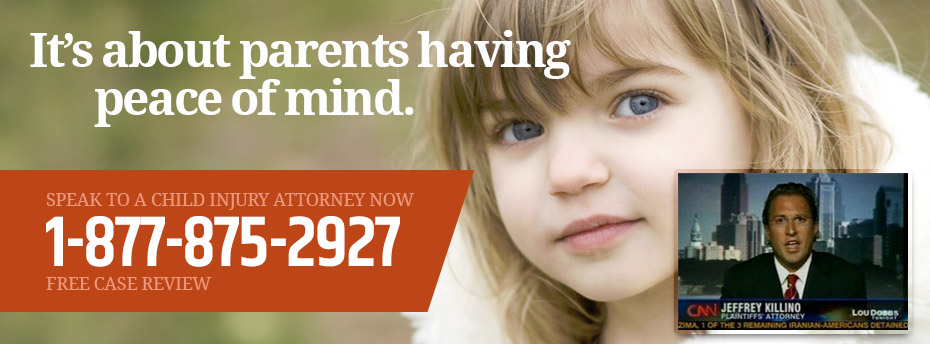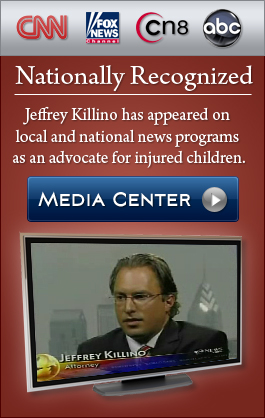Many parents consider a baby sling, carrier, wrap, or backpack a practical way to transport their infant whenever they wish to keep their hands free for other tasks. But while “babywearing” offers certain benefits to both caregiver and child, it’s essential to understand that these types of carriers aren’t without risks.
For example, infants may be seriously injured if they fall from a defective product. Incorrectly placing a baby in a carrier, sling, wrap, or backpack – whether due to inadequate warnings or unclear instructions for use – can result in hip dysplasia or even suffocation.
Defectively designed and manufactured products can cause severe injury and wrongful death, especially when an infant or small child is involved. Our Child Injury Lawyers have successfully represented victims of defective products, including wearable baby carriers, slings, wraps, and backpacks, earning national acclaim for their aggressive pursuit of justice on behalf of injured children and their families.
About Wearable Baby Carriers
Wearable baby carriers allow parents and caregivers to transport an infant on their chest or back, leaving their hands free to attend to other children, take care of household chores, or navigate an airport, mall, or another crowded public place.
- Soft padded baby carriers are usually worn in the front, although some have adjustable options that allow parents to wear their infant on their back or hips.
- A baby wrap is a simplified version of a carrier that wraps across an adult’s shoulders and torso, creating a pouch so a baby can sit on a parent’s chest, hips, or back. Unlike baby carriers, a baby wrap has no clasps, rings, or buckles that might dig into the parent’s or child’s body.
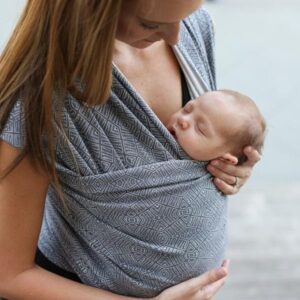
- A baby sling is a pouch or strip of fabric usually secured over-the-shoulder and worn in the front in various positions.

- A baby backpack usually has a rigid frame and is worn on the back. These products are only suitable for older babies who sit upright.
Wearable baby carriers are particularly useful when an infant suffers from colic or reflux. Keeping an infant close also helps regulate their temperature, allows them to hear their mother’s heartbeat as they did in the womb, and encourages a sense of closeness, security, and love.
Infant Injuries and Deaths Linked to Baby Carriers, Wraps, Slings, and Backpacks
Unfortunately, babywearing benefits may not outweigh the risks for very small children, especially newborns or those born prematurely.
More than 159 incidents involving fabric baby slings and wraps were reported to the U.S. Consumer Products Safety Commission (CPSC) between January 2003 and September 2016, including 17 fatalities and 10 hospitalizations. From January 1, 2003, through September 4, 2014, the agency received 50 incident reports involving rigid baby backpacks, including 34 injuries.
In some cases, low birth weight babies, preemies, or children suffering from a cold or other breathing issue suffocated while seated in a wearable carrier. Others fell from a carrier, resulting in bruising and contusions, head injuries, or bone fractures.
Baby carriers, wraps, slings, and backpacks may also interfere with an infant’s hip position, resulting in hip dysplasia.
Federal Standards for Wearable Infant Carriers
In July 2018, the CPSC published mandatory federal standards for soft infant carriers, including slings and wraps. These standards require carriers to come with permanently attached warning labels and instructions, like illustrated diagrams, to show the proper position of a child. The warning labels must include statements regarding:
- Suffocation hazards and how to prevent them.
- The possibility that a child might fall from the carrier.
- A reminder for parents and caregivers to check buckles, snaps, rings, and other hardware to make sure no parts are broken.
The standard also requires baby sling carriers to:
- Support up to three times the manufacturer’s maximum recommended weight.
- Be more durable to prevent seam separations, fabric tears, or breakage.
- Be able to prevent a child being carried from falling out of the sling during normal use.
Rigid backpack carriers have been subjected to a mandatory federal standard since February 2015, including specific requirements intended to prevent kids from falling from the devices.
Wearable Infant Carrier Recalls
Despite the existence of mandatory safety standards, the CPSC has announced several recent recalls for wearable infant carriers, including some products that have caused serious harm to children.
Infantino Baby Carrier Recall

Most recently, Infantino recalled around 14,000 infant carriers out of concern that a buckle could break and cause a child to fall. The April 2020 recall included:
- Go Forward 4-in-1 Evolved Ergonomic Carrier, Lot Code 2018 0619
- Go Forward 4-in-1 Evolved Ergonomic Carrier, Lot Code 2018 0719
- Flip Front2back Carrier, Lot Code 2018 0719
- Up Close Newborn Carrier, Lot Code 2018 0719
Although no incidents were reported in connection with the defective carriers, parents and caregivers were warned not to use the products. Infantino offered a free replacement carrier.
LÍLLÉbaby Active Series Baby Carrier Recall

In November 2018, LÍLLÉbaby recalled around 6,600 Active series baby carriers because the sliding chest-clip strap can detach from the shoulder strap, posing a fall hazard to the child in the carrier. The firm received three reports of the chest straps detaching from the carrier, including one child who fell out of the device. No injuries were reported.
Eddie Bauer Infant Carriers Sold Exclusively at Target

A month earlier, Eddie Bauer recalled around 22,000 infant carriers sold exclusively at Target stores nationwide. According to the recall notification, the wearable carriers’ buckles could break, causing a child to fall. Eddie Bauer received several reports of broken buckles, but none resulted in injuries.
Osprey Poco Child Backpack Carriers

In April 2017, Osprey recalled 82,000 Poco Child Backpack Carriers because a child could fall through the product’s leg openings. Osprey had received four reports of kids falling through the carrier leg openings, resulting in one report of a skull fracture and one report of scratches to the head.
Twin Go Baby Carrier Recall

In May 2016, TwinGo LLC recalled around 4,000 Twin Go Baby Carriers because the waist buckle could break and cause an infant to fall. The firm had received 13 reports of buckles breaking worldwide, including 10 in the United States. No injuries were reported.
Chimparoo Baby Carrier Recall
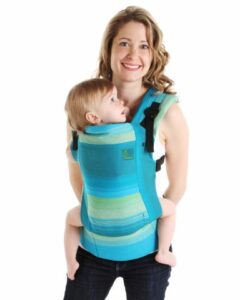
L’echarpe Porte-bonheur recalled more than 1,000 Chimparoo Baby Carriers in October 2016, also due to a fall hazard. The firm had received one report of a strap loosening unexpectedly from the carrier’s side buckle. No injuries were reported.
How to Safely Wear Your Baby
The CPSC advises caution when using infant slings and baby wraps with children younger than four months. According to the agency:
- Babies cannot control their heads in the first few months of life because of still developing neck muscles. The sling’s fabric can hold the baby in a position that blocks their breathing, causing suffocation within just a minute or two.
- Additionally, where a sling keeps the infant in a curled position bending the chin toward the chest, the airways can be restricted, limiting the oxygen supply. The baby will not be able to cry for help and can slowly suffocate.
Parents and caregivers using baby slings and infant wraps should:
- Ensure your infant’s face is not covered and visible to you at all times.
- If nursing your baby in a sling, change their position after feeding, so their head is facing up and is clear of the sling and your body.
- Be vigilant about frequently checking your child, always making sure nothing is blocking your baby’s nose and mouth and that their chin is away from their chest.
Backpack carriers should only be used to carry toddlers who are already able to sit upright.
A baby carrier should allow an infant’s hips to rest (naturally) apart to the side, with the thighs supported, and the hips and knees bent to encourage healthy hip development. This position is known as the frog position, M-position, jockey position, straddle position, spread-squat position, or human position.
To ensure your son or daughter is safe in a wearable baby carrier, infant sling, wrap, or backpack, always:
- Read the tags for height and weight, and use the right baby carrier for your child’s size.
- Tighten the straps before you put your child in the carrier, then use the straps to get a snug, secure fit.
- Make sure you can adjust all straps firmly with one hand.
- Check that the straps are still secure and show no signs of damage before each use. Don’t use the carrier if any straps or buckles are damaged.
- Get someone to help you put your baby in the carrier until you get used to doing it on your own. You might also find it helpful to first practice with a doll or Teddy bear.
- Take care when putting on and taking off the carrier, as this is when falls are most common. Get someone to help you, or sit down on the floor.
- If you must bend down while wearing the carrier, make sure to hold on to something stable.
- To avoid burns, never place your child in a wearable carrier while cooking.
Contact an Experienced Child Injury Lawyer
As a nationally recognized Child Injury Lawyer, Jeffrey Killino has extensive knowledge with lawsuits involving dangerous children’s products, including wearable baby carriers, slings, wraps, and backpacks, and consistently recovers highly favorable verdicts and settlements on behalf of his clients. Although these verdicts and settlements cannot be taken as a prediction of your case’s outcome, Jeffrey Killino will work diligently and aggressively to make sure you and your family receive the compensation you deserve. If your son or daughter was hurt because of a defective baby carrier, wrap, sling, or backpack, please do not hesitate to contact us at 1-877-875- 2927.
